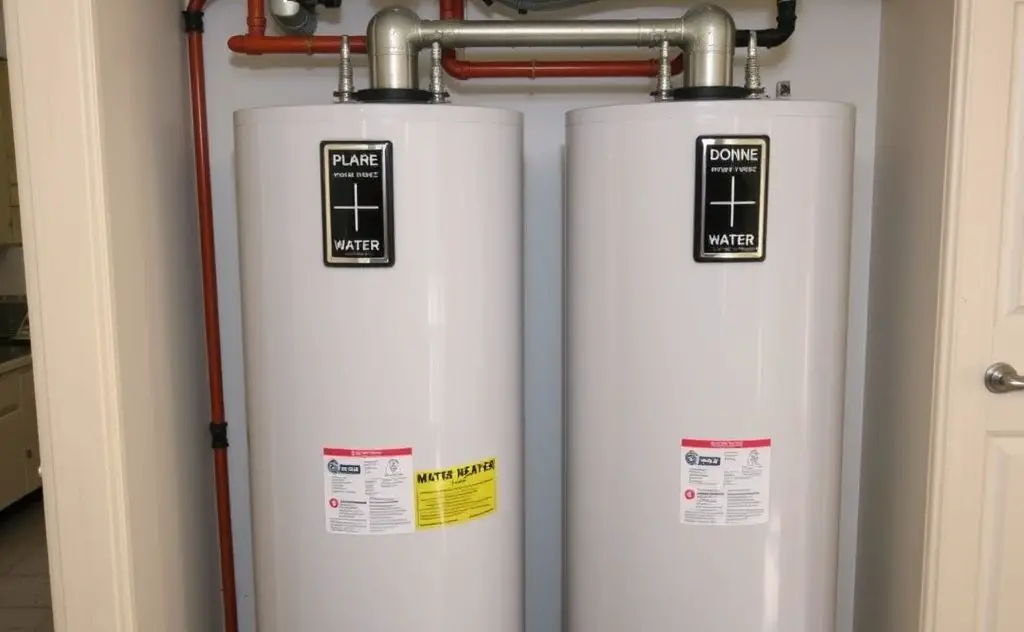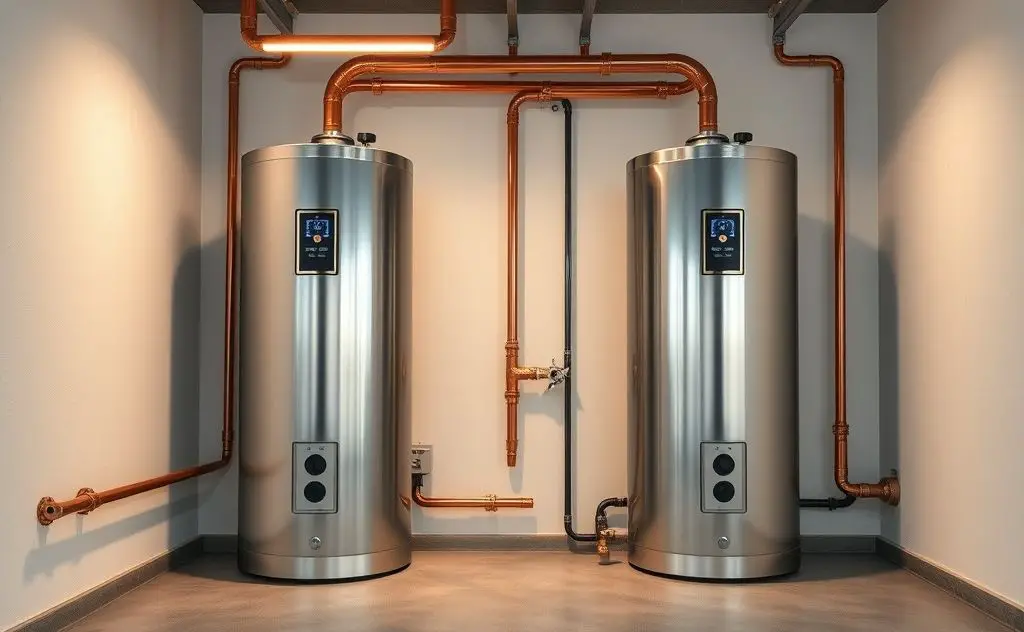To install two water heaters in parallel, connect the cold water supply to both heaters simultaneously, use a T-fitting for the hot water outlet, and ensure both units are wired to the same power source, following local codes and manufacturer instructions for safety and efficiency.
Installing two water heaters in parallel can boost hot water capacity and efficiency. This setup ensures balanced flow and consistent temperatures. Learn the correct way to connect them for optimal performance.

Parallel vs Series Water Heater Installation
Water heaters can be connected in two ways: parallel or series. Each method has different effects on performance and efficiency.
Parallel Installation Benefits
- Equal water distribution between both units
- Consistent temperature output
- Reduced strain on individual heaters
- Easier maintenance and isolation
Series Installation Drawbacks
- Uneven wear on heaters
- Potential temperature fluctuations
- Cold water sandwich effect
- Harder to maintain proper water heater temperature

Proper Parallel Installation Steps
1. Pipe Configuration
Use reverse-return piping for balanced flow. This means the first heater connected to the cold supply is the last to feed the hot water line.
Key Requirements:
| Component | Specification |
|---|---|
| Pipe Size | Minimum 3/4″ diameter |
| Pipe Length | Equal for both heaters |
| Fittings | Identical type and size |
2. Valve Installation
Install isolation valves on both inlet and outlet connections. This allows for:
- Individual heater maintenance
- Flow balancing if needed
- Emergency shutoff
3. Temperature Settings
Set both heaters to the same temperature (typically 120-140°F). This prevents heat loss issues and maintains consistency.
Common Installation Mistakes
Unequal Pipe Lengths
Different pipe lengths cause flow imbalance. One heater will work harder than the other.
Improper Valve Placement
Valves should be accessible and properly sized. Avoid placing them too close to heater connections.
Incorrect Temperature Settings
Mismatched temperatures create uneven performance. Use identical settings on both units.
Maintenance Tips for Parallel Systems
Regular Flushing
Flush both heaters annually to prevent sediment buildup. This is especially important for tankless systems.
Anode Rod Inspection
Check anode rods every 2-3 years. Replace when more than 50% corroded.
Temperature Verification
Test output temperatures monthly to ensure both heaters are performing equally.
When to Consider Parallel Installation
- Homes with high hot water demand
- Commercial applications
- Large families with multiple bathrooms
- When adding a recirculation system
For more information on water heater configurations, refer to the Dallas City Hall piping guide or consult with a licensed plumber.
